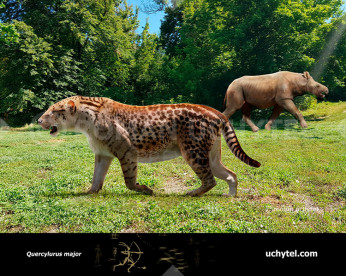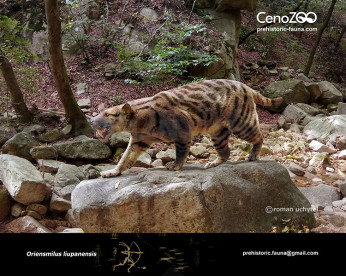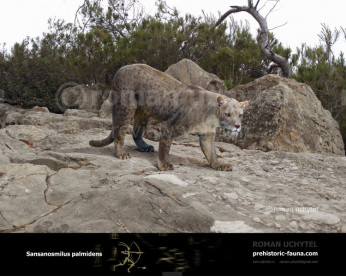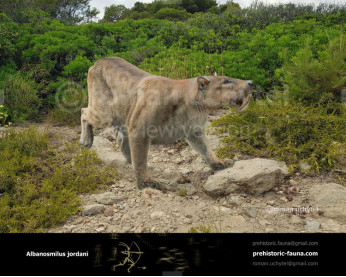Barbourofelis morrisi
0808Barbourofelis morrisi (Barbourofelis morrisi Schultz, 1970)
Order: Carnivora
Family: Barbourofelidae
Range and period of existence: Miocene of North America
Dimensions: length - 1,4 m, height - 70 cm, weight - 66 kg.
Barbourofelis is an extinct genus of large, mostly carnivorous mammals of the family Barbourofelidae (false saber-tooth cats) endemic to North America, during the Miocene living from 13.6—5.3 Ma and existed for approximately 8.3 million years. A single specimen was examined by Legendre and Roth for body mass. The first specimen was estimated to weigh 66.4 kg. Thought to possibly be lion-sized and had the longest canines of all barbourofelids. They had very prominent flanges on the lower jaws and an unusually shaped skull. The skull of Barburofelis was shortened to a greater degree than in kind of saber-toothed cats Smilodon (Smilodon), and hypertrophied upper canines were perhaps even more advanced. The lower jaw, as well as saber-toothed predators have all been relatively weak, the lower teeth are not large, the set of teeth is shortened. On the lower jaw bone, there were specific processes that are characteristic for the early saber-toothed cats, but more pronounced than in the past. A very interesting structure of the rear limb girdle of Barburofelis. The barbourofelids were probably very muscular, resembling a bear-like lion or lion-like bear. Although the Barbourofelidae family did evolve into cat-like forms, they left no descendents among modern cats.
Barbourofelis morrisi (Barbourofelis morrisi Schultz, 1970)
Order: Carnivora
Family: Barbourofelidae
Range and period of existence: Miocene of North America
Dimensions: length - 1,4 m, height - 70 cm, weight - 66 kg.
Barbourofelis is an extinct genus of large, mostly carnivorous mammals of the family Barbourofelidae (false saber-tooth cats) endemic to North America, during the Miocene living from 13.6—5.3 Ma and existed for approximately 8.3 million years. A single specimen was examined by Legendre and Roth for body mass. The first specimen was estimated to weigh 66.4 kg. Thought to possibly be lion-sized and had the longest canines of all barbourofelids. They had very prominent flanges on the lower jaws and an unusually shaped skull. The skull of Barburofelis was shortened to a greater degree than in kind of saber-toothed cats Smilodon (Smilodon), and hypertrophied upper canines were perhaps even more advanced. The lower jaw, as well as saber-toothed predators have all been relatively weak, the lower teeth are not large, the set of teeth is shortened. On the lower jaw bone, there were specific processes that are characteristic for the early saber-toothed cats, but more pronounced than in the past. A very interesting structure of the rear limb girdle of Barburofelis. The barbourofelids were probably very muscular, resembling a bear-like lion or lion-like bear. Although the Barbourofelidae family did evolve into cat-like forms, they left no descendents among modern cats.

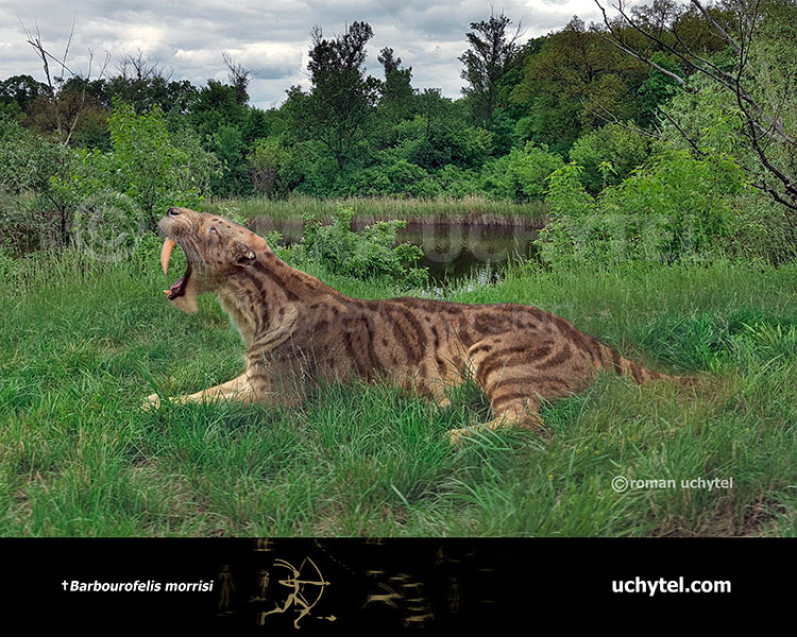
-797x638.jpg)
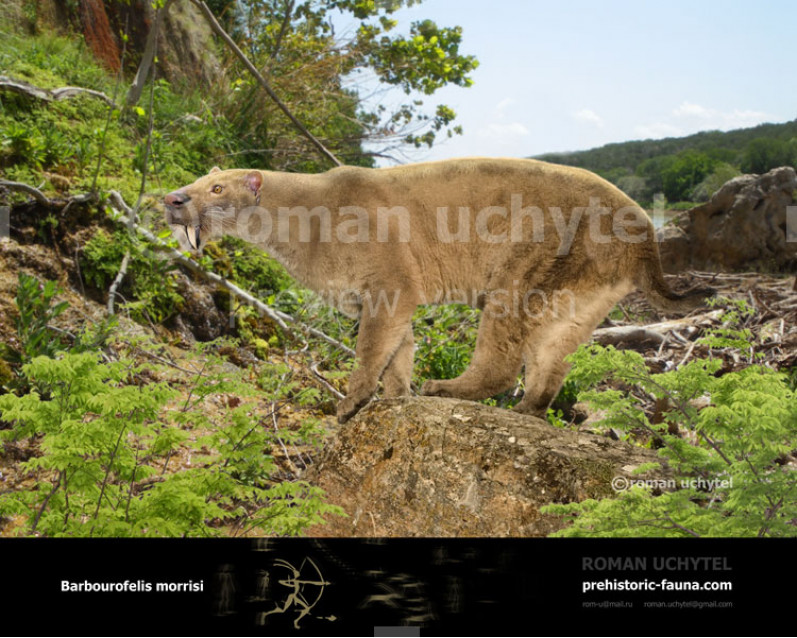

-70x56.jpg)

-346x277.jpg)
1-346x277.jpg)
